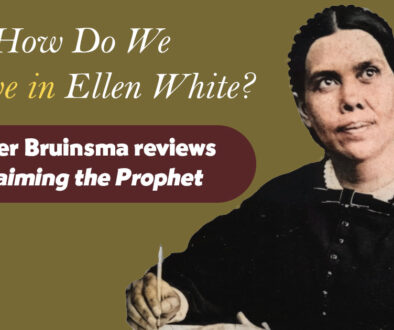Generational Differences in the Adventist Faith
by Nathan Nelson, January 12, 2016: Someone asked me the other day what my perspective was on the differences between the younger and older generations in our church. It was an awkward moment as I struggled to find a graceful way to avoid the question without seeming rude or evasive. “It’s a longer answer than just a quick conversation … we should chat about that someday.” Awkwardness averted, smile and shake hands as we go our separate ways sipping our lattes, move on with the day so we can deal with less weighty problems facing the world.
It was a simple question, but it’s one that bugged me. I found myself coming back to it, picturing those two groups in their stereotypical fashion … the old fogies we see at church every week, slipping their tithe envelopes into the offering plate while they sing the doxology, all the while wondering if the Special K loaf they brought for potluck is actually getting put into the oven in time to be warmed thoroughly by the end of the service … and the thirtysomethings, herding a gaggle of toddlers through the foyer, chugging their Starbucks as they tap their foot to the beat of the drums and bass pounding out the rhythm of the latest praise song.
Admit it … at least one of those two images popped into your head. We joke about them. We roll our eyes at them. We actually see them in church and when we talk about those two groups, we each have one or two specific people in mind that we use to fill out the picture in our head. We all know they’re stereotypes, and yet as we talk about the future of our church, the state of our church, what’s wrong with our church, these are the very stereotypes that seem to drive the conversation. Regardless of the source, those stereotypes came from an underlying truth, distilled, warped and given shape in our minds by the words we use to describe them.
Behind those images, misguided though they may be, those groups do exist; the older generations, watching life come to a close, taking comfort in the routines and rituals that saw them through the better part of a century in relative prosperity and health; the younger generations, fighting desperately to find a place in the world, optimistic that they can make their mark despite the pressures of work, parenthood, and tradition resisting their efforts every step of the way; the “others” not so easily categorized who consistently feel left out of the discussion, forgotten once again in crowds too busy fulfilling their stereotypical roles to do more than pause to say “Happy Sabbath” before taking “their seat” in the sanctuary to engage in whatever version of “music wars” currently plagues their congregation.
These people all exist in our church. The common goal we hear spoken of is to be “united in Christ.” We try desperately to bridge the gaps between our generations, but we struggle. We don’t understand what causes that separation in the first place. So we ask … What is it that divides us? What keeps us from seeing eye to eye? What is that slant in perspective, the unique approach, the “je ne sais quoi” that separates us from each other?
It is, very simply … Nothing.
I hear the objections already. They’re all wrong.
Look at the person in the row ahead of you in church. Then say these words to yourself: “That could be me … in a different time or a different life.”
We’ve all heard the saying, “Everybody is a hero in their own story.” That saying largely goes in one ear and out the other. We may say, “There but for the grace of God, go I,” but I doubt many of us mean it. Stop and think about those two sayings for one full minute each.
I’m not kidding. Stop reading, set a timer for a minute, and dig into what those sayings mean.
Are you misunderstood? So is that person next to you.
Did you do the best you could? So did that guy.
Were you hurt unfairly by somebody you cared about? So was she.
That person next to you, the one you think despises you and everything you stand for … they’re a hero. They’re doing the best they can. Some days, that’s pretty awesome. Other days it’s not so great. Either way, from their perspective, in their story, they are a hero.
So are you. That’s common ground enough. Now build on that common ground … go learn their story. Figure out why they’re a hero.
You won’t succeed. Not at first. Not every time. Seeing from somebody else’s eyes is a lot of work, and takes a lot of energy; energy we frequently don’t have. But some days, sometimes you will succeed. You’ll catch the briefest of glimpses from somebody else’s eyes. When you do, pay attention for just a second to the things that make them a hero in their story. Now, make them feel like the hero of that story.
And on those weeks when you’re failing, when they just seem hateful and distant and rude and insincere … well, on those weeks, simply accept the fact that you have no energy to be understanding or empathetic, and maybe just cut them a little slack.
Imagine a church where we all did that. I know I’d show up every week.
Nathan Nelson studied English and theater at Walla Walla University where he met his wife of 15 years “who gave me two wonderful children.” He makes a living programming computers for Nike, the well-known sports shoe manufacturer. He grew up as an Adventist but is not sure how to classify himself these days, perhaps “a non-member, semi-reformed, not-quite-backslider.”




